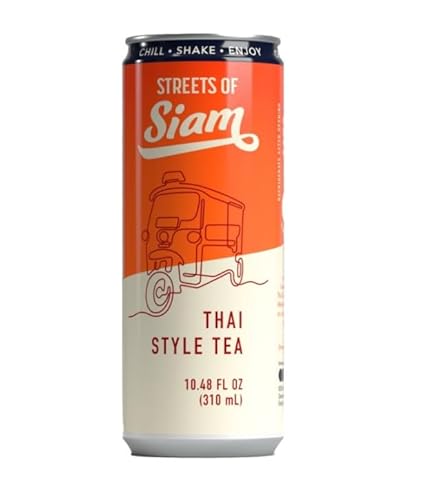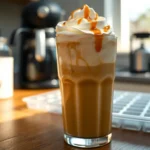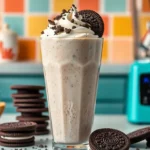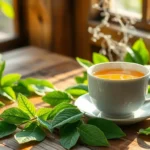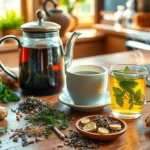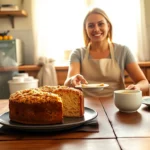We’ve fallen head over heels for milk tea – that perfect blend of creamy richness and bold tea flavors that’s taken the industry by storm. From the bustling streets of Taiwan where bubble tea was born to cozy cafes across America this beloved beverage has captured hearts and taste buds everywhere.
What makes milk tea so irresistible? It’s the magical combination of perfectly brewed tea infused with creamy milk that creates a comforting drink that’s both energizing and satisfying. Whether you’re craving the classic Hong Kong-style milk tea or wanting to experiment with trendy flavors like taro or matcha we’ve got you covered.
Essential Equipment for Making Milk Tea
Creating authentic milk tea at home requires the right tools to achieve that perfect balance of rich tea flavor and creamy texture. We recommend starting with basic equipment that will serve you well across different milk tea styles.
Basic Brewing Equipment
A quality teapot or tea infuser forms the foundation of great milk tea. Stainless steel or glass teapots work best because they don’t absorb flavors and allow you to monitor the brewing process. We prefer teapots with built-in strainers for loose leaf teas, which typically produce more robust flavors than tea bags.
Electric kettles with temperature control give you precision when brewing different tea types. Black teas need water at 200-212°F while green teas require cooler temperatures around 175-185°F. This control prevents bitter flavors and ensures optimal extraction.
Mixing and Serving Tools
A cocktail shaker or large mason jar becomes essential for creating that signature frothy texture. Vigorous shaking incorporates air and creates the creamy consistency that defines quality milk tea. Stainless steel shakers work better than plastic because they don’t retain odors.
Fine mesh strainers help achieve smooth texture by removing tea leaves and any lumps from milk powder or condensed milk. Double straining through both coarse and fine mesh produces professional results.
Measuring Equipment
Digital scales ensure consistent results when measuring tea, milk, and sweeteners. We measure tea by weight rather than volume for accuracy. Most recipes call for 1-2 tablespoons of loose leaf tea per cup of water, but scales eliminate guesswork.
Measuring spoons and cups in both metric and imperial measurements accommodate different recipe formats. Liquid measuring cups with pour spouts reduce spills when adding milk or syrups.
Optional Specialized Tools
Milk frothers create café-style texture without extensive shaking. Hand-held frothers work well for single servings while electric frothers handle larger batches. Steam wands from espresso machines produce the richest foam if available.
Bubble tea straws and wide-mouth glasses enhance the drinking experience, especially for milk teas with tapioca pearls or other add-ins. The wider opening accommodates toppings and makes sipping more enjoyable.
Temperature-controlled brewing systems like sous vide machines allow precise extraction for experimental flavors. These tools help maintain exact temperatures throughout the brewing process for consistent results.
Basic Milk Tea Base Recipe

Now that we have our equipment ready, let’s master the fundamental milk tea recipe that serves as the foundation for countless variations. This simple yet perfect base recipe delivers the ideal balance of rich tea flavor and creamy texture we’ve been discussing.
Ingredients
- 1 cup water
- 2 teaspoons black tea or 1 teabag
- 1 teaspoon sugar (or alternative sweetener)
- ¼ cup milk (whole milk or your preferred type)
Instructions
- Boil fresh water in a kettle or pan until it reaches a rolling boil.
- Add the tea leaves or teabag to your cup while preparing for steeping.
- Pour in the hot water over the tea and let it steep for 5 minutes to extract maximum flavor.
- Remove the tea leaves or teabag and strain the tea to eliminate any residue.
- Add sugar gradually and stir until completely dissolved for even sweetness distribution.
- Pour in the milk slowly until you achieve your desired color and consistency preference.
- Stir thoroughly and enjoy your perfectly balanced homemade milk tea.
Variations we recommend:
- Brown Sugar Milk Tea: Substitute brown sugar for regular sugar to create a richer molasses flavor profile. Adding heavy cream instead of regular milk produces an even creamier texture.
- Indian-Style Chai: Boil milk, sugar, and tea powder together simultaneously for an authentic creamy version. Incorporate warming spices like fresh ginger, cinnamon sticks, or cardamom pods during the boiling process for enhanced aromatic complexity.
Classic Black Milk Tea

Classic black milk tea represents the foundation of all bubble tea variations and delivers the perfect balance of robust tea flavor with creamy richness. We’ll guide you through creating this timeless beverage that captures the authentic taste of traditional tea shops.
Ingredients
For the Tapioca Pearls:
- 3/4 cup quick cooking tapioca pearls
- Water for boiling
For the Simple Syrup:
- 1/2 cup water
- 1/2 cup white sugar
- 1/4 cup brown sugar
For the Tea Base:
- 2¼ cups water
- 2 tea bags black tea or 2 tablespoons loose leaf black tea
- 1 cup half and half or milk (whole, low fat, or non fat)
- Ice cubes for serving
Directions
Prepare the Tapioca Pearls:
- Bring a large pot of water to a rolling boil over high heat.
- Add tapioca pearls to the boiling water and stir continuously for 1 minute to prevent sticking.
- Reduce heat to medium low to maintain a gentle simmer and cover the pot.
- Cook pearls for 30 minutes while stirring every 5 minutes to ensure even cooking.
- Remove pot from heat and let boba rest covered for 30 minutes.
- Strain pearls through a fine mesh strainer and rinse thoroughly with cold water.
Create the Simple Syrup:
- Combine water, white sugar, and brown sugar in a medium saucepan.
- Heat mixture over medium heat while stirring gently until both sugars completely dissolve.
- Remove from heat and allow syrup to cool to room temperature.
Brew the Tea:
- Bring 2¼ cups water to a boil in a separate pot.
- Add tea bags or loose leaf tea to the boiling water.
- Steep tea for 4 to 5 minutes to extract optimal flavor without bitterness.
- Remove and discard tea bags or strain out loose leaves.
- Allow brewed tea to cool completely before assembly.
- Add cooked tapioca pearls to the cooled simple syrup and let them soak for 30 minutes.
- Place syrup soaked boba in the bottom of serving glasses.
- Combine cooled black tea with half and half or your preferred milk.
- Add ice cubes to each glass over the boba.
- Pour the tea and milk mixture over ice and serve immediately with wide straws.
Thai Iced Milk Tea

Thai iced milk tea brings the vibrant orange color and aromatic spice blend that makes this Southeast Asian favorite irresistible. We’ll show you how to create this creamy and refreshing beverage that balances bold tea flavors with rich milk.
Ingredients
- 1/2 cup Thai Tea Mix (or black tea blend with spices like anise, cardamom, and cloves)
- 2 1/2 cups water
- 1/4 cup granulated sugar
- Ice
- 1 cup milk (half and half, sweetened condensed milk, evaporated milk, or other milk of choice)
Prep
Boil Water: We start by bringing water to a boil in a small saucepot over medium-high heat.
Add Tea Mix and Sugar: Next we add Thai Tea Mix and granulated sugar to the boiling water. Stir the mixture to combine all ingredients evenly.
Reduce Heat: We reduce heat to low and simmer the tea mixture for about 2 minutes to extract maximum flavor.
Steep and Cool: Remove the pot from heat and let the tea steep for 15 minutes. Strain the tea through a fine-mesh strainer or a tea sock to remove all loose leaves. We allow the tea to cool in the refrigerator for at least 1 hour before serving.
Assembly
Fill Glasses with Ice: We fill our serving glasses generously with ice to create the perfect chilled base.
Pour in Tea: Pour the cooled tea over the ice, filling each glass about two-thirds full to leave room for milk.
Add Milk: We top each glass with our choice of milk, whether half and half or sweetened condensed milk, then stir gently to create beautiful swirled layers.
For authentic Thai Iced Tea, we recommend using sweetened condensed milk and evaporated milk to create those signature creamy texture layers. Adjust the sugar amount to match your taste preferences, and experiment with different milk types to discover your perfect flavor and creaminess combination.
Taiwanese Bubble Milk Tea

Taiwanese bubble milk tea represents the iconic drink that started the global boba phenomenon. This beloved beverage combines rich tea with creamy milk and chewy tapioca pearls for a truly unique drinking experience.
Ingredients for Tea Base
We recommend using robust tea blends to ensure the flavor remains strong when combined with milk and ice:
- 2–3 tea bags or ½ tablespoon loose-leaf black tea (Assam or Ceylon work exceptionally well)
- ¾–1 cup hot water for steeping
- 1 cup whole milk or non-dairy creamer for traditional or vegan options
- 2–3 tablespoons sugar (cane sugar, dark brown sugar, or syrup to taste)
- 2 tablespoons heavy cream (optional for extra richness)
- 1 pinch salt to enhance flavor
Ingredients for Tapioca Pearls
The signature pearls require minimal ingredients but proper preparation:
- ¾ cup dried instant tapioca pearls (approximately 120 grams per batch)
- Water for boiling pearls
- Optional sugar syrup for soaking cooked pearls
Cooking the Tapioca Pearls
We start by bringing a pot of water to a rolling boil. Add the tapioca pearls while stirring gently to prevent them from sticking together. Cook for 5–10 minutes following the package instructions since instant pearls require less time than traditional varieties.
Remove the pot from heat and cover it. Let the pearls stand for 5–10 minutes to complete the cooking process. Drain the pearls and rinse them under cold water to stop the cooking. Soak them in sugar syrup if you prefer sweeter pearls.
Preparing the Tea Base
We steep the tea bags or loose leaves in hot water for 3–5 minutes to extract maximum flavor. Remove the tea and immediately add the sweetener and a pinch of salt while stirring until completely dissolved.
Add the milk and cream (if using) to the tea mixture. Mix everything well to create a smooth and creamy base that will hold up against the ice.
Assembly
We place the cooked tapioca pearls at the bottom of a tall glass first. Fill the glass with ice cubes leaving enough room for the tea mixture.
Pour the prepared tea base over the ice and pearls slowly to create beautiful layers. Stir the drink thoroughly and serve immediately with a wide straw to accommodate the pearls. The pearls taste best when enjoyed right after cooking for optimal chewy texture.
Hong Kong Style Milk Tea

This rich and creamy beverage represents the pinnacle of tea artistry from Hong Kong’s vibrant café culture. We’ll guide you through the traditional silk stocking method that creates the perfect balance of robust tea flavor and smooth milk texture.
Ingredients
- Black Tea: 10 tablespoons of Ceylon Orange Pekoe or mixed black tea leaves
- Water: 6 cups hot water (heated to 96-98°C)
- Evaporated Milk: 1⅓ cups (315 ml) high-quality evaporated milk
- Sweetened Condensed Milk: 1-2 tablespoons for sweetness and creaminess
Brewing Instructions
We begin by placing our tea leaves into a thin cotton bag specifically designed for this brewing method. Pour the hot water over the tea leaves and allow them to steep for exactly 12 minutes to extract maximum flavor without introducing bitterness.
The traditional “pulling” technique comes next. We pour the tea back and forth from the bag four times using smooth, controlled motions. This process distributes the flavors evenly throughout the liquid and creates the signature smooth texture that defines authentic Hong Kong milk tea.
Monitor the water temperature carefully throughout the brewing process. The optimal range of 96-98°C ensures proper extraction while preventing the tea from becoming overly bitter or astringent.
Straining Technique
The cotton bag serves as our primary straining tool in this traditional method. We strain the tea through the bag to remove any remaining leaf particles and reduce potential bitterness. This silk stocking technique creates the remarkably smooth texture that separates Hong Kong style milk tea from other varieties.
Press the bag gently against the side of your brewing vessel to extract the remaining liquid without forcing bitter compounds from the leaves. The final result should flow smoothly without any visible particles or sediment.
Serve immediately at approximately 94°C for the most authentic experience. Add the evaporated milk first, followed by sweetened condensed milk adjusted to your preferred level of sweetness and richness.
Matcha Milk Tea

Matcha milk tea brings the earthy elegance of Japanese green tea culture to our beloved milk tea repertoire. This vibrant green beverage combines the ceremonial tradition of matcha with modern milk tea craftsmanship.
Ingredients
For each serving of matcha milk tea, we need these essential components:
- Matcha powder: 1-2 teaspoons (culinary or ceremonial grade recommended)
- Hot water: 2 tablespoons to 1/4 cup
- Milk: 1-2 cups (dairy or plant-based options like oat, almond, or soy milk)
- Sweetener: 1-2 tablespoons honey, maple syrup, or sugar (optional)
- Ice cubes (for iced versions)
- Boba/tapioca pearls (optional for texture)
The quality of matcha powder directly impacts the final flavor, so we recommend investing in high-quality culinary or ceremonial grade varieties.
Whisking the Matcha
Creating smooth matcha requires proper technique to avoid clumps and achieve the perfect frothy texture.
Sift the matcha powder through a fine sieve into a small bowl or mug. This crucial step prevents lumps from forming in our final drink.
Add hot water at approximately 175°F (80°C). Boiling water can make matcha bitter, so we keep the temperature controlled.
Whisk vigorously using a bamboo matcha whisk for 30-60 seconds until the mixture becomes frothy and completely smooth. A small whisk or milk frother works as an alternative if a traditional bamboo whisk is unavailable.
Combining with Milk
The method for combining matcha with milk varies depending on whether we’re preparing hot or iced versions.
For Hot Matcha Milk Tea: Heat the milk in a saucepan or milk steamer until warm but not boiling. Pour the heated milk over our prepared matcha mixture, add sweetener to taste, and stir thoroughly.
For Iced Matcha Milk Tea: Allow the prepared matcha mixture to chill for approximately 15 minutes. Pour the cooled matcha over ice in a tall glass, then add cold milk. We can enhance texture by adding prepared boba that has been marinated in sweetener for enhanced flavor.
Customization remains key to perfecting our matcha milk tea. We adjust sweetness levels and experiment with different milk types to achieve our preferred taste and creaminess balance.
Chai Milk Tea

Building from our diverse milk tea journey, we explore the aromatic industry of chai milk tea, a spiced beverage with Indian origins that has captivated tea lovers globally. This warming drink combines traditional whole spices with strong black tea and creamy milk to create a rich, flavorful experience.
Ingredients
We use these essential components to create authentic chai milk tea:
- 2 cups water
- 4-5 whole green cardamom pods, lightly crushed
- 1 cinnamon stick, broken into pieces
- 3-4 whole cloves
- 4-5 black peppercorns
- 1-inch piece fresh ginger, sliced
- 3-4 black tea bags or 3 teaspoons loose black tea
- 1 cup whole milk (or 2%, skim, oat, or almond milk)
- 2-3 tablespoons sugar, honey, or brown sugar syrup
- 1/2 teaspoon vanilla extract (optional)
Simmering the Spices
We begin by crushing the whole spices lightly to release their essential oils and maximum flavor potential. Add the crushed cardamom pods, broken cinnamon stick, cloves, peppercorns, and sliced ginger to a medium saucepan with 2 cups of water. Bring the mixture to a boil over medium-high heat, then reduce heat to low and simmer for 8-10 minutes. This simmering process allows the spices to infuse the water thoroughly, developing the chai’s distinctive aromatic profile that forms the foundation of our beverage.
Adding Tea and Milk
After the spices have simmered and created an aromatic base, we add the black tea bags or loose tea to the spiced water. Steep the tea for 3-5 minutes to achieve a strong brew that can hold its own against the bold spices and creamy milk. Pour in the milk of your choice and bring the entire mixture to a gentle boil, stirring occasionally to prevent scorching. Add your preferred sweetener and optional vanilla extract, then continue to simmer for 2-3 minutes until the flavors meld together beautifully. Strain the chai through a fine-mesh strainer to remove all spice solids and tea leaves before serving hot in warmed cups.
Taro Milk Tea

This purple-hued delight brings together the naturally sweet and nutty flavor of taro root with the smooth richness of milk tea. We love how this vibrant drink offers a unique twist on traditional milk tea while maintaining that perfect creamy texture.
Ingredients
- 1 green tea bag or 1 Tbsp jasmine green tea/black tea
- 3-4 Tbsp taro powder
- 1-2 Tbsp sweetened condensed milk or honey, sugar to taste
- 1 cup milk (dairy or non-dairy)
- Ice (optional)
- Tapioca pearls (for boba version)
Prep
We start by brewing our tea base to create the foundation for this colorful beverage. Steep the tea bag in 1/2 cup of hot water for 4-5 minutes to extract the perfect strength. Loose tea leaves work beautifully here too and allow us to adjust the steeping time based on our preferred intensity.
Blending Instructions
Combine the base ingredients: In a heat-resistant cup, we mix the brewed tea with taro powder and sweetened condensed milk using a spoon or handheld milk frother. This step ensures the taro powder dissolves completely and creates our signature purple color.
Add milk and ice: Pour in 1 cup of milk and add half a cup of ice to the mixture. We stir everything well to achieve that perfect creamy consistency throughout.
Optional boba enhancement: For those who want the full bubble tea experience, we cook tapioca pearls separately in boiling water until they become translucent and soft. Cook them in 5 cups of water until they float to the surface, then drain and soak in brown sugar syrup made from 2 Tbsp brown sugar and 2 Tbsp water.
For the most authentic flavor experience, we recommend using fresh taro when available. Simply boil or steam the taro until soft, mash it thoroughly, and blend with the tea mixture for an incredibly rich and natural taste. Remember to adjust both sweetener and taro powder amounts to match your personal preference.
Make-Ahead Tips and Storage

Planning ahead transforms your milk tea experience from rushed preparation to effortless enjoyment. We can prepare several components of our favorite milk tea recipes 2 to 3 days in advance while maintaining optimal flavor and texture.
Preparing Tea Base and Syrups
Strong black tea forms the foundation of most milk tea recipes and stores exceptionally well when properly prepared. We recommend brewing tea using either warm or cold methods depending on your time availability. Warm brewing involves steeping tea in hot water and allowing it to cool completely before refrigeration. Cold brewing offers distinct advantages by soaking tea bags in water overnight in the refrigerator creating a naturally sweeter and less bitter flavor profile with reduced caffeine content.
Simple syrups and flavored syrups can be prepared simultaneously with tea bases for maximum efficiency. Store prepared syrups in small jars with tight fitting lids in the refrigerator for up to 5 days. These versatile syrups work perfectly in other beverages and cocktails extending their usefulness beyond milk tea preparation.
Storage Guidelines for Maximum Freshness
| Component | Storage Method | Duration | Notes |
|---|---|---|---|
| Brewed Tea | Airtight containers in refrigerator | 3 days | May turn cloudy but flavor remains intact |
| Simple Syrup | Tight-lid jars in refrigerator | 5 days | Reusable for other beverages |
| Complete Milk Tea | Airtight containers in refrigerator | 3-4 days | Stir well before serving |
Brewed black tea maintains its rich flavor when stored in airtight containers or glass jars in the refrigerator for up to 3 days. Tea might develop a slightly cloudy appearance during refrigeration but this visual change does not affect the taste or quality of your final drink.
Complete milk tea mixtures without tapioca pearls can be prepared and stored for 3 to 4 days in the refrigerator. Always stir the mixture thoroughly before serving as separation naturally occurs during storage.
Dairy Components and Timing
Heavy cream and whipping cream require special consideration when making milk tea ahead of time. We recommend adding these dairy components just before serving to preserve their fresh taste and smooth texture. This timing ensures optimal creaminess without compromising the quality of your prepared milk tea base.
Non-dairy alternatives like almond milk follow similar guidelines and can be incorporated using the same timing principles for best results.
Tapioca Pearl Considerations
Cooked boba pearls present unique storage challenges due to their tendency to harden and lose their signature chewy texture when refrigerated. We strongly recommend preparing tapioca pearls fresh each time you serve milk tea for the best possible experience.
Emergency storage of cooked boba requires keeping them submerged in syrup within airtight containers and consuming within 1 day maximum. Gentle reheating helps restore some texture but cannot match the quality of freshly prepared pearls.
Professional Storage Tips
Tea ice cubes prevent dilution while maintaining strong flavor profiles when serving cold milk tea. Freeze prepared tea in ice cube trays for convenient portioning and enhanced drink quality.
Avoid freezing complete milk tea preparations as this process negatively affects both texture and flavor integrity. Refrigeration remains the optimal storage method for all milk tea components and complete preparations.
Customization Options

We can transform any milk tea recipe into a personalized creation by adjusting key components to match our taste preferences. The beauty of milk tea lies in its versatility and adaptability to different dietary needs and flavor profiles.
Sweetener Variations
We have many sweetening options that can dramatically change our milk tea’s flavor profile and texture. Sugar remains the classic choice for its clean sweetness and ability to dissolve completely in hot tea. Honey adds floral notes and natural complexity while providing a slightly thicker mouthfeel. Agave nectar offers a neutral sweetness with a lower glycemic index than traditional sugar.
Brown sugar creates rich caramel undertones that pair beautifully with robust black teas. Maple syrup brings earthy sweetness that complements spiced milk teas like chai. Sweetened condensed milk serves dual purposes by adding both sweetness and creaminess in Hong Kong style preparations.
We can adjust sweetness levels based on our other ingredients since fruit syrups and flavored powders often contain added sugars. Starting with less sweetener allows us to taste and adjust gradually for the perfect balance.
Milk Alternatives
Our choice of milk significantly impacts both flavor and texture in milk tea preparations. Cow’s milk provides the richest mouthfeel and most neutral taste that allows tea flavors to shine through. Almond milk offers nutty undertones and lighter consistency while maintaining good frothing properties.
Coconut milk delivers tropical richness and natural sweetness that works exceptionally well with Thai tea blends. Soy milk creates smooth texture with slight bean notes that complement earthy teas like matcha. Oat milk provides creamy consistency similar to dairy milk with subtle grain flavors.
Each milk alternative affects our final drink differently. Coconut milk works best in cold preparations while oat milk excels in hot applications. Almond milk pairs beautifully with fruit flavored teas while soy milk enhances traditional black tea bases.
Flavor Add-Ins
We can elevate our milk tea creations with various flavor enhancers and textural elements. Fruit syrups like strawberry, mango, and passion fruit transform basic milk tea into tropical treats. Cheese foam adds savory richness that creates an interesting contrast to sweet tea bases.
Tapioca pearls remain the most popular textural addition, providing chewy contrast to smooth milk tea. Fresh fruit bits like diced strawberries or mango chunks add natural sweetness and visual appeal. Flavored powders such as taro, chocolate, or vanilla create specialty drinks with unique color profiles.
Spice additions like vanilla extract, cinnamon, or cardamom can transform simple milk tea into complex flavor experiences. We recommend experimenting with different combinations while keeping complementary flavors in mind to avoid overwhelming our taste buds.
Troubleshooting Common Issues

Even experienced tea enthusiasts encounter challenges while perfecting their milk tea create. We’ve identified the most common problems and provide proven answers to help you achieve consistent results.
Weak or Bitter Tea Base
Weak tea often results from insufficient brewing time or low-quality tea leaves. We recommend using robust black tea varieties and steeping for at least 5 minutes for basic milk tea. Strong tea forms the foundation of excellent milk tea since milk dilutes the tea’s intensity.
Bitter tea typically occurs from over-steeping or using water that’s too hot. Water temperature should remain between 200-212°F for black tea varieties. We suggest removing tea bags or straining loose leaves after the recommended steeping time to prevent excessive tannin extraction.
| Tea Type | Water Temperature | Steeping Time |
|---|---|---|
| Black Tea | 200-212°F | 3-5 minutes |
| Green Tea (for Matcha) | 175-185°F | 2-3 minutes |
| Oolong Tea | 185-205°F | 3-4 minutes |
Sweetness Imbalance
Over-sweetening masks the tea’s natural flavor profile and creates an unbalanced drink. We recommend starting with less sweetener than you think you need and adjusting gradually. Different sweeteners affect flavor differently – brown sugar adds molasses notes while honey contributes floral undertones.
Insufficient sweetness often becomes apparent after adding milk since dairy components can mute sweet flavors. We suggest dissolving sweeteners in hot tea before adding cold milk to ensure even distribution throughout the beverage.
Milk Integration Problems
Curdled milk occurs when adding cold dairy to very hot tea or using acidic tea varieties. We recommend cooling your tea base to room temperature before incorporating cold milk. Alternatively, warm your milk slightly before combining with hot tea to prevent temperature shock.
Separation issues happen when milk fats don’t properly emulsify with the tea base. We suggest using evaporated milk for richer integration or adding milk gradually while stirring continuously to create a smooth, homogeneous mixture.
Texture and Consistency Issues
Thin or watery texture indicates insufficient milk content or weak tea concentration. We recommend using whole milk or evaporated milk for richer body. Heavy cream adds luxurious thickness but should be used sparingly to avoid overwhelming the tea flavor.
Grainy texture in matcha milk tea results from improperly whisked matcha powder. We suggest sifting matcha powder before whisking and using a small amount of hot water to create a smooth paste before adding milk.
Tapioca Pearl Problems
Hard or chewy pearls indicate undercooking or improper storage. We recommend boiling tapioca pearls for the full recommended time and testing one pearl for doneness before removing from heat. Properly cooked pearls should be soft throughout with slight resistance when bitten.
Mushy pearls result from overcooking or sitting too long in liquid. Fresh tapioca pearls maintain their texture best when consumed within 4 hours of preparation. We suggest cooking pearls in small batches for optimal texture control.
Conclusion
We’ve shared our favorite milk tea recipes that’ll transform your kitchen into a personal tea shop. From the classic black milk tea foundation to exotic taro and matcha variations these recipes offer something for every palate and skill level.
The beauty of homemade milk tea lies in complete customization control. You can adjust sweetness levels experiment with different milk alternatives and create unique flavor combinations that perfectly match your preferences.
With proper equipment storage techniques and our troubleshooting tips you’re equipped to master any milk tea style. Whether you’re craving the nostalgic taste of Hong Kong-style tea or want to explore trendy bubble variations these recipes will deliver café-quality results at home.
Start with our basic milk tea base and gradually explore more complex flavors as your confidence grows. Your perfect cup of milk tea is just one recipe away.
Frequently Asked Questions
What is milk tea and where did it originate?
Milk tea is a beverage that combines bold tea flavors with creamy milk, creating an energizing and satisfying drink. It originated in Taiwan and has gained widespread popularity in cafes across America. The drink comes in various styles, including classic Hong Kong-style and trendy flavors like taro and matcha.
What essential equipment do I need to make milk tea at home?
Basic equipment includes quality teapots or tea infusers, electric kettles with temperature control, and mixing tools like cocktail shakers for frothy texture. Measuring equipment ensures consistent results. Optional specialized tools include milk frothers and temperature-controlled brewing systems for experimenting with different flavors.
What are the main ingredients for a basic milk tea recipe?
The essential ingredients include strong black tea (like Assam or Ceylon), whole milk or non-dairy alternatives, sweeteners (sugar, honey, or condensed milk), and ice for cold versions. Some recipes also include tapioca pearls for bubble tea variations.
How do I prepare tapioca pearls for bubble tea?
Boil water and add tapioca pearls, cooking them according to package instructions (usually 10-15 minutes). Once cooked, they should be chewy but not hard. Optionally, soak them in sugar syrup for added sweetness. Pearls are best used fresh for optimal texture.
What makes Hong Kong-style milk tea unique?
Hong Kong-style milk tea uses a traditional “silk stocking” brewing method involving a special strainer. The tea is “pulled” multiple times between containers to achieve a smooth texture. It combines strong black tea with evaporated milk and sweetened condensed milk for richness.
How do I make matcha milk tea?
Whisk high-quality matcha powder with hot water until smooth and frothy. Combine with milk of choice, adjusting sweetness as desired. For iced versions, let the mixture cool before adding ice. The key is using premium matcha powder for the best flavor.
What spices are used in chai milk tea?
Traditional chai includes cardamom, cinnamon, cloves, ginger, and black peppercorns. These whole spices are simmered with strong black tea, then combined with milk and sweeteners. The spice blend creates the characteristic aromatic and warming flavor profile.
How can I customize my milk tea?
Adjust sweetness with various options like sugar, honey, or brown sugar. Choose different milk types (cow’s milk, almond, coconut) for varying richness. Add flavor enhancers like fruit syrups, cheese foam, or spices. Experiment with tea bases and toppings to create your perfect blend.
How should I store milk tea components?
Brewed tea bases can be refrigerated for 3-5 days. Simple syrups last up to one month when stored properly. Complete milk tea should be consumed within 24 hours. Prepare tapioca pearls fresh for best texture. Use airtight containers and avoid adding dairy to stored tea bases.
What are common milk tea brewing mistakes to avoid?
Avoid over-steeping tea (causes bitterness) or under-steeping (weak flavor). Use proper water temperature for different teas. Don’t add milk to very hot tea to prevent curdling. Ensure proper ratios of tea to milk for balanced flavor. Cook tapioca pearls thoroughly for proper chewy texture.





